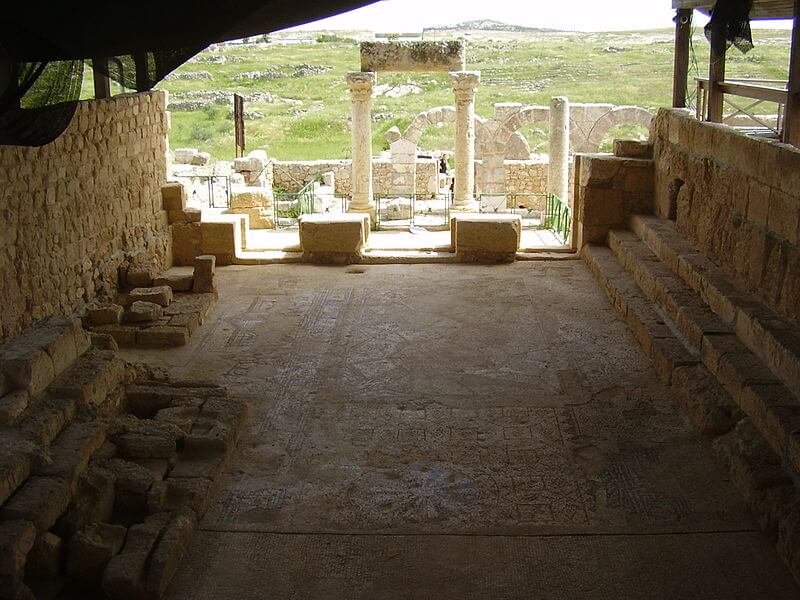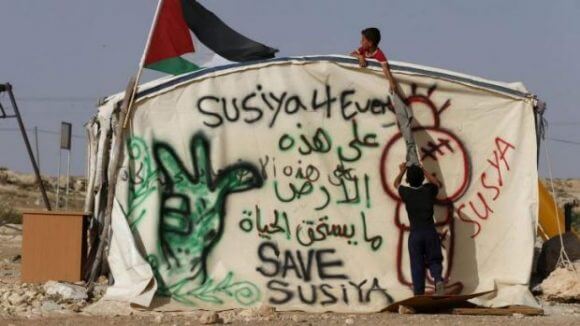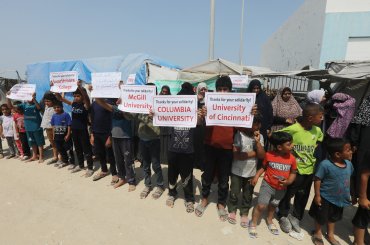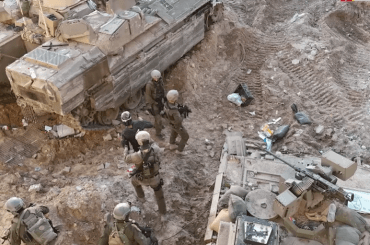The ancient Palestinian village of Susiya, in the south Hebron hills faces the threat of demolition by the Israeli military. This is not the first time the village had been threatened. But this time Israeli officials are under international pressure, including the United States. According to Haaretz, an Israeli newspaper, “U.S. administration officials have informed the Prime Minister’s Office and the Defense Ministry that a severe American reaction would result if Israel destroys the houses in the village.
Ironically, Israel may be poised to destroy an earlier incarnation of themselves. As early as 1918, Israel’s first prime minister, David Ben Gurion, co-wrote a well-documented book, Eretz Yisrael in the Past and Present, expressing his belief that the majority of Palestinian peasants were descendants of the inhabitants of ancient Judea. The general population of Judea, 6th century BC, did not go into exile: only the political and intellectual elite were forced to settle in Babylon. The farming community remained on their land. Ben Gurion, and his co-author Yitskhak Ben Tsvi, claimed that during the Muslim conquests beginning with the Prophet Mohammed in the 7th century and lasting for hundreds of years the majority of Jews converted to Islam. Modern genetic research supports Ben Gurion’s claim. When Muslim Palestinians showed little interest in converting (back?) to Judaism, Zionists stopped promoting this idea.
A historical example of losing one’s tradition through forced conversion happened in 1492 in Andalusia, during the Spanish Inquisition. Outwardly many Jews converted to Christianity while continuing to practice their religion in secret. They became known as crypto-Jews, and eventually lost their original connection to their Jewish ancestry.

Evidence of Susiya’s past can be seen in the ruins of an ancient synagogue from the fifth century that coexists near an ancient mosque from the tenth century. But the 350 people struggling to hold onto their ancestral home in Susiya are not concerned with identity issues. Expelled from nearby caves in 1986 by the Israeli army, the inhabitants of this primitive village without electricity or running water, are struggling to survive. The caves and synagogue have become an archeological park, designated a National Heritage Site, managed by settlers living up the road in the exclusively Jewish settlement of Susya that was built in the eighties. New Susya is protected by soldiers and a security fence. It is hooked up to the electrical grid, has running water and representation in the Israeli Knesset. Under international law, the Jewish settlement of Susya is considered illegal.
In 2010, I traveled to the South Hebron hills with a former Israel soldier. From Jerusalem, we drove on a modern highway built for the exclusive use of Jewish-Israeli settlers and military. It tunneled through the earth making it easy to ignore the fact we were passing beneath Palestinian towns and villages. It was a color coded world; white water tanks on Jewish rooftops denoted solar collectors; black water tanks on Palestinian rooftops meant emergency water reserves; green license plates were reserved for Palestinian cars; but the only license plates on Highway 60 were yellow––Israelis only. My friend was taking me to ancient Susiya because I wanted to donate some children’s picture books to their school library.
What was Palestinian Susiya’s crime? The village lies in an area that is under full Israeli military and civilian control. In 2001 the Israeli army demolished Susiya and expelled families without offering compensation, but the people returned and moved into shacks and tents erected on what remained of their agricultural land. In 2012, Israel’s Defense Ministry issued demolition orders for fifty structures in Susiya that were built without permits. Rabbis for Human Rights helped this endangered community gain “authorized” status. A petition to freeze all demolitions until there was a ruling by the Israeli Supreme Court was denied, leaving the military free to demolish homes, the school and the clinic.

Susiya is not the only Palestinian village in the south Hebron Hills in danger of displacement, and settler violence. But the world is watching. In the summer of 2015, twenty-eight visiting European Union diplomats demanded that the demolition orders be rescinded. The following week over one hundred Israeli and Diaspora Jews went to Susiya where they were welcomed by Hebrew speaking villagers who expressed gratitude for their support. With a Palestinian flag at his back, and a cistern for a podium, former Minister Mustafa Barghouti gave an inspiring speech. “The Palestinian Nakba that began 67 years ago is still going on….But we are still here, still struggling and will go on struggling until Palestine is free!”

A Jewish-Israeli peace activist sounded a bit like Tevya from Fiddler on the Roof when he lamented on the possible destruction of Susiya, “What is here? Not much. Some cisterns which the army has not yet filled with dirt, a few sheep which the settlers have not yet stolen and olive trees that have not been cut down.”
Signs in Hebrew, Arabic and English, floated over the heads of the crowd like wise edicts––”There is another way.” “Thou shall not rob thy fellow humans.” “By Justice shall Zion be redeemed.” My favorite, “Each person shall sit under his vine and fig tree, and live in peace.”
Sometime this summer, Israel’s High Court will decide whether or not to implement another demolition decree. But the real fate of Susiya rests in the court of world opinion. I imagine standing under the desert sun with the villagers, alongside Israeli and international peace activists, and suddenly feel hot and thirsty––but also hopeful. As long as voices are raised, and the villagers have the will, Susiya cannot be erased. Israeli authorities may not recognize this Palestinian village, but erasing thousands of years of history is not easy. Jews and Palestinians may very well be blood brothers, or cousins, but even if we were strangers, Palestinians deserve justice, human rights and equality just like everyone else.



Such an amazing story. I hope folks influential in the world community keep tabs on this little piece of land, and hold Israel in klieg lights.